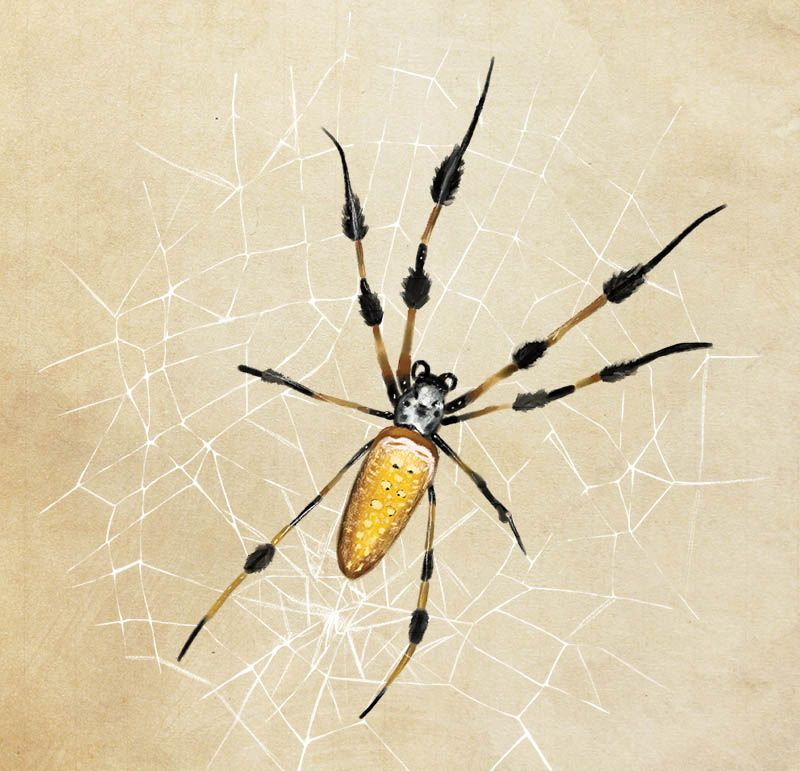Oh, what tangled webs they weave—huge, remarkably intricate nets that can be as large as six feet across. Strong enough to catch an unwary bird or bat, they can also bring a shriek to the unsuspecting passerby who gets caught in the sticky silk.

These arachnids might be tarantula-sized, but they are basically gentle giants—golden silk orb weavers known by many names, including ”calico spider,” ”writing spider,” ”giant wood spider,” and most commonly, ”banana spider.” But have no fear: these colorful spinners are basically harmless to humans and play an important role in Lowcountry ecology, with a buggy diet that includes flies and mosquitoes. Read on to take a closer look, if you dare
ORIGINAL SPIN - The Latin name, Nephila clavipes, means ”fond of spinning,” and the unique webs these spiders weave are incredibly intricate, often woven in artistic patterns that give rise to the name “writing spider.” Moreover, the silk is five times stronger than steel and tough enough to withstand a gale. Building and repairing the web is a constant process, with adult spiders continuously destroying and rebuilding portions of the web on a daily basis.
GOING FOR GOLD - Banana spiders are golden orb weavers, so named for the color of their webs. The golden shimmer attracts bees and other bugs to the glistening strands reflected in sunlight. The color also acts as a camouflage, blending in with the dappled light of its forest surroundings so well it’s almost invisible.
WEB SITE - Ideally, the female weaves her giant web in a forested area, creating a huge bug-catching net that can stretch from a strong tree limb to the ground. Yet suburban areas also appeal as porch doorways and garage openings provide the same stability.
SAFETY NETS - Aside from the main, center web, a series of complex, non-sticky barrier webs also comprise the banana spider’s domain. These haphazardly woven guard strands often include plant debris and are used as places to store silk-wrapped insect carcasses.They not only provide additional strength, but function as an early warning system, sending vibrations to the female that alert her of an incoming predator or the recent catch of prey.
TO-GO DINING - When an insect gets caught in the web, the spider quickly immobilizes it with its venom and then covers the carcass in layers of silk, creating a neatly wrapped take-out dinner placed safely in the net for a later meal. Banana spiders dine on a variety of bugs, from beetles, cicadas, and locusts to flies and mosquitoes.
BIG MOMMA - The large, colorful female is easily recognized as she perches in the center, or “hub,” of the web. Females can reach lengths of three inches, their size amplified by a bright yellowish-orange abdomen and striped brown-and-orange banded legs. The much smaller males are dark brown and often difficult to find. The unobtrusive male plays an important role when it comes to mating with the female (she can lay as many as 3,000 eggs a season); however, he often ends up as her dinner once the ritual is complete.